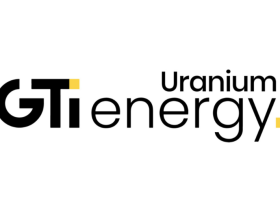The S&P/TSX Venture Composite Index (INDEXTSI:JX) jumped 7.68 points this past week to close at 556.76
The latest inflation data released by the US Bureau of Labor Statistics this past Tuesday (February 13) shows that inflation in the country continued to cool in January, recording a year-on-year increase of 3.1 percent. However, the core consumer price index, which excludes food and energy, was 3.9 percent above where it was a year ago.
The higher-than-expected increases sent markets into decline following the release, with some analysts seeing the numbers as an indicator the US Federal Reserve is likely to delay cuts to the benchmark rate.
North of the border, Canada’s minister of natural resources, Jonathan Wilkinson, announced plans to accelerate regulatory processes for the mining and processing of critical minerals in the nation. According to Wilkinson, the changes will reduce the time it takes for approvals from 12 to 15 years to as few as five years.
Other changes to stimulate sector growth will include establishing an investment tax credit to aid with the capital associated with the development of new projects. These credits will be in addition to existing funding for infrastructure for electrical lines and road building. The new changes are being introduced to help secure Canada’s energy independence.
How did TSXV-listed mining and energy stocks fare this past week? Here are the top five gainers.
1. TAG Oil (TSXV:TAO)
Weekly gain: 45.95 percent; market cap: C$86.47 million; current share price: C$0.54
TAG Oil is an oil exploration and production company with assets in the Middle East and North Africa. It is currently focused on the development of its Badr oilfield project in the Western Desert of Egypt, with efforts centered around the Abu Roash formation. Exploration of the project has indicated the potential for more than 500 million barrels of oil in place. TAG has a concession term deal in place until 2032 with a 10 year extension of the development and operation of the project.
The company has released no news since January 3, when it provided an update on drilling progress at the BED4-T100 well in the Badr oil field.
2. Pulse Oil (TSXV:PUL)
Weekly gain: 42.86 percent; market cap: C$18.18 million; current share price: C$0.05
Pulse Oil is an oil exploration and production company focused on the development of assets west of Edmonton, Alberta, Canada.
Its Bigoray site consists of more than 50 isolated reservoirs in the Pembina/Bigoray trend with an average width of 1 to 2 kilometers and 100 meters thick. Discovered petroleum initially in place was estimated at 33.52 million barrels by geotechnical modelling.
Shares of Pulse saw gains this past week following an announcement on Friday (February 16) that the 5-09 well at the Bigoray Nisku E pool has been producing since the beginning of February. Additionally, the company said that drilling will commence at the Nisku D pool on February 19. Pulse plans to drill the well to a total depth of 2,686 meters over 12 days.
3. Nouveau Monde Graphite (TSXV:NOU)
Weekly gain: 42.07 percent; market cap: C$206.55 million; current share price: C$3.85
Nouveau Monde Graphite is a graphite and battery materials company with operations located within 150 kilometers of Montreal, Quebec.
When complete, its Matawinie mine will produce 103,000 metric tons (MT) of graphite concentrate annally with a 25 year lifespan. It will feature sustainable development measures, including integrated water management systems and biodiversity protection. Additionally, the mine will have vertical integration with Nouveau Monde’s Bécancour battery materials plant, which will deliver anode materials directly to market.
Shares of Nouveau Monde saw gains this past week following an announcement on Thursday (February 15) that Panasonic Energy (TSE:6752) and General Motors (NYSE:GM) had committed to multiyear offtake agreements which will cover the supply of 36,000 MT of active anode materials, representing 85 percent of Nouveau Monde’s phase 2 Matawinie mine and Bécancour battery materials plant production. The companies will also provide US$50 million for a tranche 1 investment to advance the development of the projects.
Additionally, strategic partner Mitsui (TSE:8031) and long-time investor the Pallinghurst group will provide a total of US$37.5 million into Nouveau Monde’s development with proceeds being used to repurchase convertible notes.
4. Kirkland Lake Discoveries (TSXV:KLDC)
Weekly gain: 33.33 percent; market cap: C$12.41 million; current share price: C$0.14
Kirkland Lake Discoveries is a gold and copper exploration company focused on its namesake project in Ontario, Canada.
The project consists of a district-scale land package covering approximately 38,000 hectares, and is located in the Abitibi Greenstone Belt. The company’s Lucky Strike, Goodfish-Kirana, KLW and KLC properties have demonstrated anomalous occurrences of copper, silver and other minerals, and have been host to past-producing gold and copper mines.
Shares of Kirkland Lake gained more than 33 percent this week, although the company has not released any news.
5. Volcanic Gold Mines (TSXV:VG)
Weekly gain: 33.33 percent; market cap: C$12.75 million; current share price: C$0.30
Volcanic Gold Mines is a gold and silver exploration and development company with operations in Eastern Guatemala.
The company’s Holly project, a joint venture with Radius Gold (TSXV:RDU,OTC Pink:RDUFF), hosts high-grade gold and silver mineralization. A mineral resource estimate produced in June 2022 shows inferred values of 272,110 ounces of gold and 10.91 million ounces of silver with a gold equivalent cutoff of 3 grams per metric ton.
Volcanic’s Motagua Norte project consists of an 86 square kilometer land parcel with 13.5 square kilometers licensed for exploration. The site hosts a large, high-grade, surface-level gold and silver footprint.
Shares of Volcanic saw gains this past week following the release of news on Thursday that exploration at the Mila target at the Motagua Norte project has commenced. According to the company, past assay results from the eastern wall of a north-south quartz ridge returned results up to 118 grams per metric ton gold, with the location being targeted for the first few drill holes.
FAQs for TSXV stocks
What is the difference between the TSX and TSXV?
The TSX, or Toronto Stock Exchange, is used by senior companies with larger market caps, while the TSXV, or TSX Venture Exchange, is used by smaller-cap companies. Companies listed on the TSXV can graduate to the senior exchange.
How many companies are listed on the TSXV?
As of September 2023, there were 1,713 companies listed on the TSXV, 953 of which were mining companies. Comparatively, the TSX was home to 1,789 companies, with 190 of those being mining companies.
Together the TSX and TSXV host around 40 percent of the world’s public mining companies.
How much does it cost to list on the TSXV?
There are a variety of different fees that companies must pay to list on the TSXV, and according to the exchange, they can vary based on the transaction’s nature and complexity. The listing fee alone will most likely cost between C$10,000 to C$70,000. Accounting and auditing fees could rack up between C$25,000 and C$100,000, while legal fees are expected to be over C$75,000 and an underwriters’ commission may hit up to 12 percent.
The exchange lists a handful of other fees and expenses companies can expect, including but not limited to security commission and transfer agency fees, investor relations costs and director and officer liability insurance.
These are all just for the initial listing, of course. There are ongoing expenses once companies are trading, such as sustaining fees and additional listing fees, plus the costs associated with filing regular reports.
How do you trade on the TSXV?
Investors can trade on the TSXV the way they would trade stocks on any exchange. This means they can use a stock broker or an individual investment account to buy and sell shares of TSXV-listed companies during the exchange’s trading hours.
Data for this 5 Top Weekly TSXV Performers article was retrieved at 1:00 p.m. PST on February 16, 2024, using TradingView’s stock screener. Only companies with market capitalizations greater than C$10 million prior to the week’s gains are included. Companies within the non-energy minerals and energy minerals were considered.
Article by Dean Belder; FAQs by Lauren Kelly.
Securities Disclosure: I, Dean Belder, hold no direct investment interest in any company mentioned in this article.
Securities Disclosure: I, Lauren Kelly, hold no direct investment interest in any company mentioned in this article.





